FOOD, GLORIOUS FOOD – HOW TO SHOP AND EAT LIKE A LOCAL IN PARIS
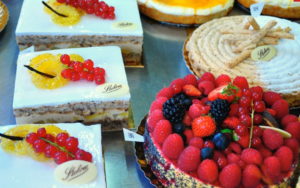
Paris is Europe’s most densely populated city, and offers a mind-boggling array of food offers. There are even local Parisian products available, if you know where to look. One of the great advantages of renting an apartment rather than staying in a hotel is that you can explore so many wonderful culinary treats from almost any district in which you find yourself on your daily excursions. However, no matter where you stay, it’s easy to put together a picnic of goodies from your neighbourhood to enjoy in one of the many parks or down by the Seine on a warm evening.
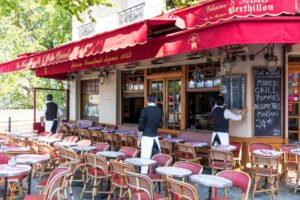
Like many big cities, these days Paris is home to a vibrant mix of international cuisines and Parisians are frequenting everything from tiny ramen cafes to specialty meatball shops. It’s true to say that in recent years classic French bistro food may have seen something of a decline due to the novelty of so many different cuisines to try. Thankfully, traditional bistro fare is now seeing quite a revival, mostly with a more modern twist, yet still respecting tradition.
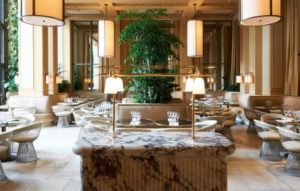
Some of these have fast become the hottest tables in town, such as Septime in rue Charonne,11th arr., Le Caillebotte, rue Hippolyte-Lebas, 9th arr., specialty seafood restaurant Girafe, in the Cité de l’Architecture, Place du Trocadero, 16th arr., and once again, Les Jules Verne at the Eiffel Tower, which recently re-opened its doors after a complete make-over and with an exciting new chef, is on everyone’s must-visit list. Book well in advance for all these.
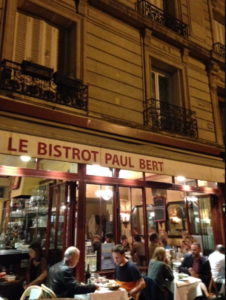
In recent years, rue Paul Bert, which runs off rue Faidherbe in the 11th arr.,near the Bastille, historically known for cabinetmakers, has transformed into one of the most vibrant food destinations in the city. A new breed of chefs and local business people, whose restaurants and gourmet food shops reflect their passion and appreciation of France’s gastronomic past, had a vision to offer the best quality food and produce to the public. One such is Le Bistrot Paul Bert, now joined by a number of other like-minded bistros.
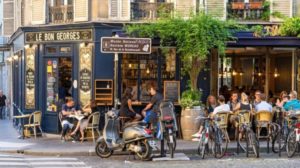
Some of these younger chefs have started a movement known as bistronomie—a merging of “bistrot” and “gastronomie”, offering made-from-scratch cuisine at affordable prices yet with ingredients worthy of the best 3 star establishments. Bistronomie has become a platform for creatively reinterpreting classic French recipes with modern techniques or different ingredient combinations. This street has it all. Check it out and the surrounding quartier. Nearest metro: Faidherbe-Chaligny.
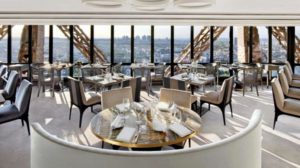
One of the clichés about the French that happens to be true is that they are obsessive about food. Virtually from birth, French children grow up with a great awareness of food, its origins and preparation.
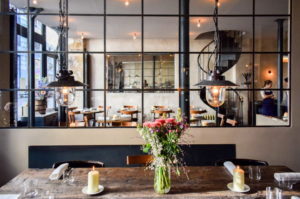
Exposure to a broad range of international cuisines (and no, I’m not talking about Maccas!), means that foreign ingredients and produce are now commonplace, and has expanded the French palate accordingly. Having said that, the French regard themselves as the custodians of all aspects of their culture, of which cuisine is an integral part.
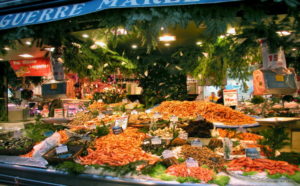
With over 80 markets setting up each week across the city, Paris offers a huge selection of fresh produce to locals, no matter where in the city they live. The outdoor markets operate usually three times a week all year round, and there are a number of indoor markets and a couple of food streets that function almost every day. These are not to be confused with flea markets (marchés aux puces), although many food markets do have a number of regular non-food vendors.
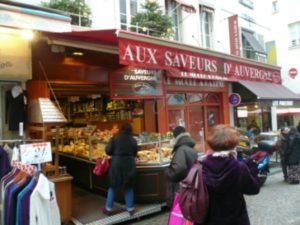
We are very fortunate that both our Paris apartments have wonderful food close by. It’s one of the great joys of being in Paris, and we never tire of exploring the fantastic range of fresh, seasonal produce and ready-prepared meals available, plotting what we’ll enjoy for dinner that night.
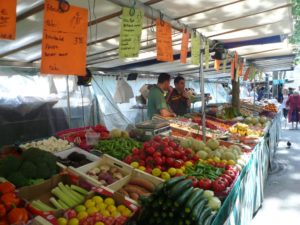
It’s a source of fascination observing shopping habits, speculating as to why Monsieur So-and-So’s fruit and veg. stand has a long queue patiently waiting to be served, while the opposite stall, seeming to sell identical produce, will only have a couple of customers. What does that long line of people know that we can’t discern?

The outdoor markets is a thriving tradition throughout the country that survives through the patronage of locals, and in our view, helps explain why most French supermarkets are quite small by say, Australian standards, offering a much smaller, limited range of fresh produce than we’re accustomed to. Once you see how beautiful the market produce is, and how accessible, you would only patronise a supermarket for such things in moments of desperation!
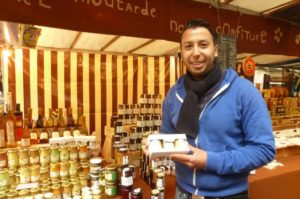
You will often find producers and vendors that don’t sell their goods anywhere but in markets. We have a favourite young Moroccan man named Tarik who sells the most delectable mustards and vinegars at both the Place Monge and Place Maubert markets. As well as normal size mustard jars, he has little pots which make perfect small gifts to take home.
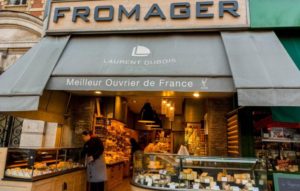
There are a number of companies and individuals in Paris, such as Paris by Mouth and Secret Food Tours, that offer walking tours to some of the city’s best food markets, and if your time is limited or perhaps you don’t know the city very well, taking one of these tours is a great idea.
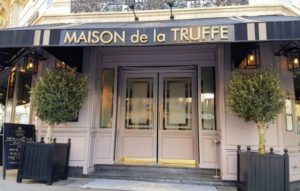
Since the markets are usually mornings-only affairs, a market tour won’t take up all of your day, although some offer cooking classes afterwards, or adjourn to a local café.
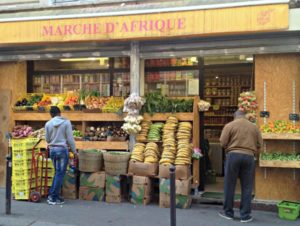
Some markets are focussed on particular cuisines. For example, the Marché Dejean in the 18th arr., in the heart of the city’s Little Africa, with immigrants from countries such as Senegal, Togo, Congo and Cameroun. Hence, it’s a cosmopolitan market, especially on a Sunday, with a strong West African flavour—think manioc, yams, tilapia, plenty of spices and hallal butchers. Chateau Rouge metro (Line 4) will get you there.
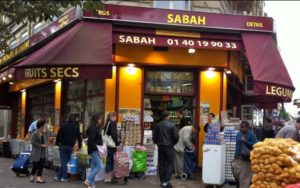
The Marché Aligre (officially called Marché Beauvau) in the 12th arr., not far from the Bastille, also has a great international vibe, with shops like Sabah selling Middle Eastern foods including feta and haloumi cheeses, dozens of kinds of olives, dates and an array of exotic spices. This market is a collection of street stalls combined with a covered market, where you’ll see numerous cheese stalls, a well-known seafood stall, La Marée Beauvau, and butchers’ stalls, such as Boucherie Les Provinces, offering an impressive selection of their own terrines and charcuterie. You’ll also find a good range of Lebanese and Portuguese specialities. Take metro Line 8 to Ledru-Rollin.
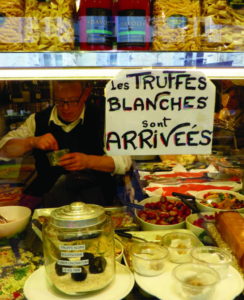
One of the delights of being in Paris is tracking down good food neighbourhoods. Our own street, rue Mouffetard in the Latin Quarter of the 5th, rue Cler in the 7th, rue de Bretagne in the 3rd and rue Montorgueil that runs through the 1st and 2nd arrs.,* are famous for their food shops, covering everything from top class fruit and veg., fishmongers, organic butchers, specialty cheese shops, patisseries, artisan chocolatiers and top class wine shops. Aside from perhaps a small-ish supermarket, very few chain stores are to be found in these streets.
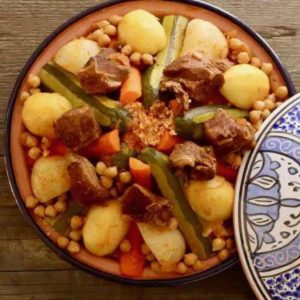
Surprisingly, the city actually produces a number of food items. The eastern side of the 18th arr., often overshadowed by its more picturesque Montmartre neighbourhood, has become known as La Goutte d’Or (drop of gold), developing into one of the city’s most interesting food hubs over the last few years.
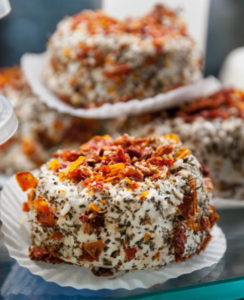
From micro-breweries to grower co-ops, the district is home to Paris’s first cheese-maker, La Laiterie de Paris, which has brought a taste of the countryside to the 18th arr. offering a wide selection of cheeses produced and ripened on site, as well as specialities from quality producers. Don’t miss the fresh goat’s cheese rolled in flower petals. This unique dairy is the brainchild of 36 year-old Pierre Coulon, who had been making cheeses at the likes of the prestigious Maison Androuet and had his own goat and sheep farm in western France for over 10 years.
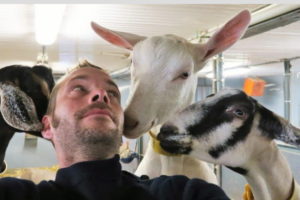
His dream of launching his own cheese production became a reality, thanks to a successful crowdfunding campaign in 2017 which allowed him to purchase the specialised equipment needed to start his business. His cheeses are made from organic cow, goat and sheep’s milk from Brittany and the Seine Maritime region. He has now partnered with other small Paris-based food producers such as the Brasserie de la Goutte d’Or, the first microbrewery in Paris, and herb growers whose herbs are grown on the rooftops of Paris. As well as cheese, M. Coulon also produces butter, yoghurt, fromage blanc, and very popular fresh milk.
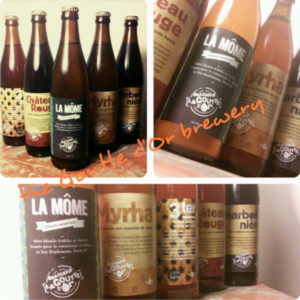
The brews of La Goutte d’Or are the unique blends of owner Thierry Roche’s passion for artisanal beer and love of the neighbourhood where he lives and brews. He sources most of his ingredients, including ginger, hibiscus, hot pepper and dates, from the nearby Marché Dejean. You’ll find the Brasserie at 28, rue de la Goutte d’Or. Metro: Barbes-Rochechouart (Lines 4 & 6).
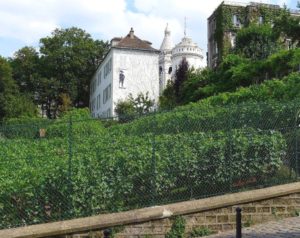
Not only does Montmartre have the Sacré Coeur, it comes as quite a surprise to learn that Paris has its own La Fête des Vendanges (grape harvest festival), since Paris doesn’t immediately spring to mind as a wine-growing area. However, vineyards have flourished on Montmartre since the Romans built a temple dedicated to the god Bacchus. A Benedictine Abbey that produced the wine was destroyed during the Revolution, although the Clos Montmartre was spared. The vineyard lay fallow until it was replanted in 1933.
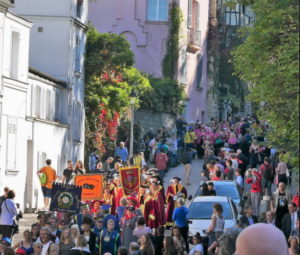
The vineyard, funded by the Mairie de Paris, covers 1,556 sq.m., yielding about 1,700 bottles of Gamay and Pinot Noir, most of which is auctioned for charity during the 5 days of the Fête, held every year around 6th October. Although entry to the vineyard itself is by invitation-only, it lies just behind the Musée Montmartre, and only wire mesh fencing comes between you and the vines.
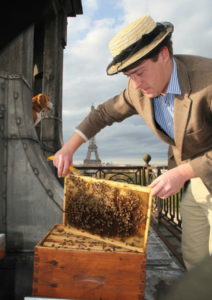
Rooftop beehives have become part of a drive to boost urban agriculture in the city, with ambitious plans to cultivate mushrooms, fish, herbs and spices and hops for beer in the city’s abandoned spaces. Many beehives sit atop numerous great monuments such as the Musée d’Orsay, Opéra Garnier, Grand Palais and the Invalides.
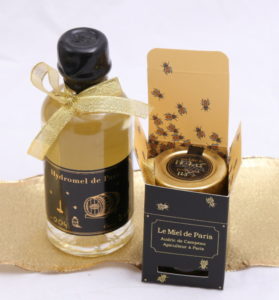
In fact, bees have been a part of the city’s history for hundreds of years, as a symbol of immortality for French rulers, a sign of agricultural strength, as well as a tribute to honey production.
You can buy honey produced from Paris’s rooftop hives at La Grande Epicerie, the magnificent food hall of department store Le Bon Marché, at 38 rue de Sevres in the 7th arr.
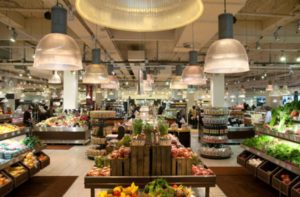
Covering an area of 3,500 sq.m., La Grande Epicerie is an unmissable gastronomic destination where hours can be spent leisurely browsing through the dizzying array of over 30,000 products, a number of which are made on the premises.
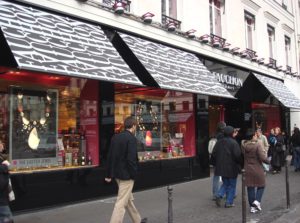
Another wonderful food store is Fauchon at 30, Place de la Madeleine in the 8th. A revered institution since 1886, Fauchon is France’s answer to London’s Fortnum & Mason, stocking everything from the finest foie gras and terrines, truffle products, oils, vinegars, coffees, teas, biscuits, macarons, cakes and handmade chocolates. This is the place we head to for perfect gifts that shout out Paris, all beautifully presented in their distinctive black, white and hot pink packaging. Fauchon has now expanded its gourmet brand internationally and also recently opened its first hotel on Place de la Madeleine.
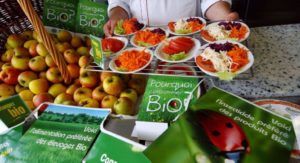
If you’re keen on organic produce, the French, who are very fussy shoppers especially when it comes to food, are increasingly more and more demanding about the nature and source of what they consume. In Paris there are a number of very good shops that specialise in natural, organic or simply “non-treated” goods and products. The term to look for is ‘Biologique’, or even simply ‘Bio’.
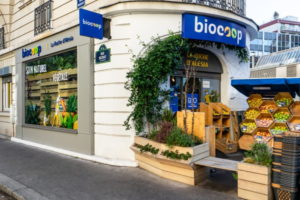
One of the best is Biocoop, which began as a co-operative for buying organic foods back in the 1970s but has now grown into a chain of more than 300 independently owned stores, 11 of which are in Paris. Their mission statement says that they will always favour local, seasonal produce, and each store works directly with local producers. You won’t find avocados from South Africa or Kiwi fruit from New Zealand at Biocoop. These stores also stock Fair Trade, vegan and gluten-free foods and products.
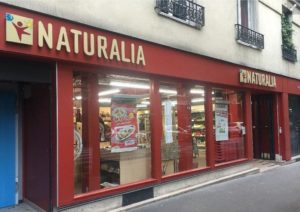
Another Bio chain of shops is Naturalia and rapidly expanding Bio C’Bon. We have a popular Naturalia shop in rue Mouffetard which we like very much. In the 5th arr. there’s also a good branch of Le Retour a la Terre Rive Gauche in rue le Goff, close to the Luxembourg Gardens.
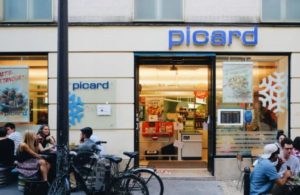
If you’re staying in a reasonably well-equipped apartment, it’s easy to find delicious things to take home and either cook yourself or re-heat in a microwave. This can be a godsend if you simply want to stay in and relax after a long day on your feet. For just such occasions, you should certainly get to know Picard. It began as Les Glacieres de Fontainebleau in 1906, nowadays there’s a Picard branch in almost every neighbourhood—perhaps you’ve passed one and not quite realised what they do. Picard is a fantastic frozen (surgelés) food store, offering a wide variety of high quality products ranging from entrees, main dishes to desserts, even beautifully presented hors d’oeuvres if you just want something to snack on over a glass of wine.
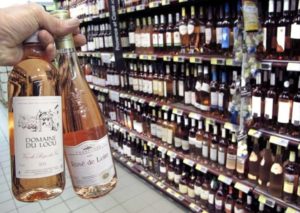
One thing that supermarkets are very convenient for is that they all sell wine, champagne, beer and a selection of spirits. If you don’t have a wine store close by, don’t hesitate to head into the nearest supermarket. Another nice thing about Parisian supermarkets is that most have a machine where you can squeeze your own orange juice.
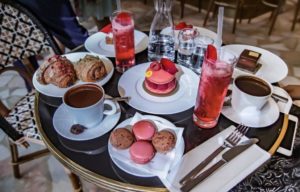
For lovers of macarons, Ladurée is certainly the most famous store for these sweet treats. However, many people regard the Pierre Hermé shops to be the ultimate macaron maker. They also produce a stunning range of patisserie and chocolates and some shops also have an in-house cafe. There are around 20 branches across the city, including one in Galeries Lafayette.
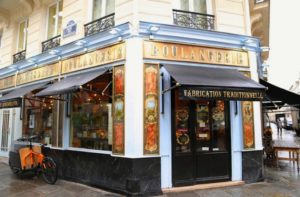
Bread is an essential on any French table. It’s said that 85% of the population makes a daily visit to their local boulangerie, sometimes going twice a day in order to buy the freshest baguette possible. You won’t find many French people subscribing to a no-carb diet. An essential part of every meal, bread is regarded as a valuable part of the country’s gastronomic heritage. When searching for your perfect loaf, look for the emblem Boulangerie Artisanale or a sign indicating fabrication traditionnelle. This means the bread is made from scratch on site, and the shop does not bring in frozen dough, mass produced in a far-away factory.
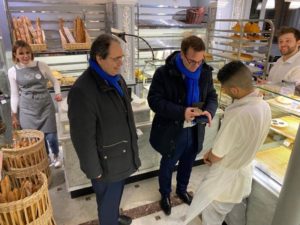
The annual Meilleure Baguette de Paris (Best Baguette in Paris) competition is held to find the best baguette in the city. In 2020, it was baked by the youngest-ever entrant, 26 year old Taieb Sahal at Maison Julien Les Saveurs de Pierre Demours at 13 rue Pierre-Demours in the 17th arr. Jurors rank each entry according to crumb, flavour, smell, evenness of cooking and aesthetic appearance. As the winner out of 210 competitors, M. Sahal earned the privilege of baking for the French President for an entire year.
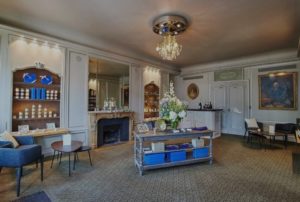
There’s a beautiful gift shop, Le Comptoir, on the ground floor of one of the country’s most famous restaurants, Le Tour d’Argent, located at 17 Quai de la Tournelle, on the corner of rue du Cardinal Lemoine. As well as the shop, the restaurant also has a Boutique Bar where you can enjoy a coffee, a juice, a glass of champagne—and more if you feel like it.
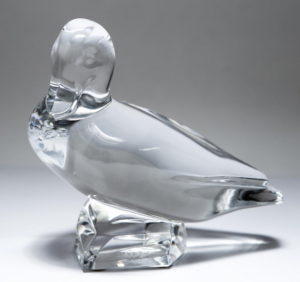
The shop stocks a range of their house-made condiments, spices, sweet treats, wines, terrines and foie gras, as well as monogrammed accessories and tableware, including the exquisite little Baccarat crystal ducks that adorn each table in the restaurant. A selection of the gourmet goodies is available packaged in beautiful gift boxes. A perfect souvenir of this Paris temple of gastronomy to take back home!
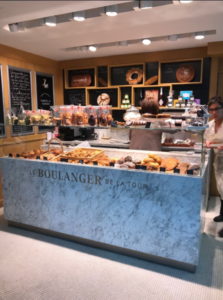
Directly opposite the restaurant is its own bakery, Le Boulanger de la Tour. Ideally located for buying delicious picnic supplies to enjoy down by the river, which is just across the road. As our other apartment is only 2 doors away, we can testify to the superlative quality of their breads and croissants and other tasty treats. We’ve often encountered staff scampering across the street with laden trays of freshly cooked patisserie and breads headed for the restaurant.
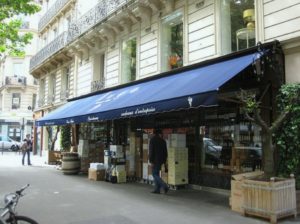
There are any number of very good wine stores in Paris, and one of the oldest is Caves Augés which opened in 1850. It’s an atmospheric treasure trove crammed floor to ceiling with examples of the best wines France has to offer, along with a selection of the best French cognacs and Armagnac. It’s a wine-lover’s paradise. As well as regular tastings, the Augé’s autumn champagne degustations are one of the city’s most anticipated events, where you can sample grand marques as well as small-producers’ champagnes that can’t be found easily, if at all, outside of France. Located at 116, Bvd. Haussmann, in the 8th arr.
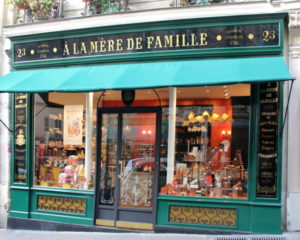
A trip to Paris is a great opportunity to try a wide variety of wonderful edible treats and there are many opportunities to buy a few little gastronomic goodies to enjoy back home. The perfect souvenirs!
* If you’re interested to know more about the fascinating rue Montorgueil, go back to an early blog ‘The Road to Gastronomic Heaven in Paris’ published 16 Dec. 2017.
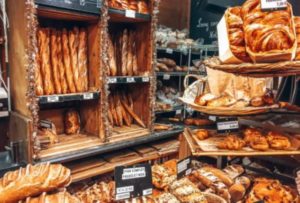


Oh you’re making me sooo hungry.
Yes, it’s certainly a foodie heaven! Just as well its a city where you tend to walk a great deal–very necessary to work off the kilos.